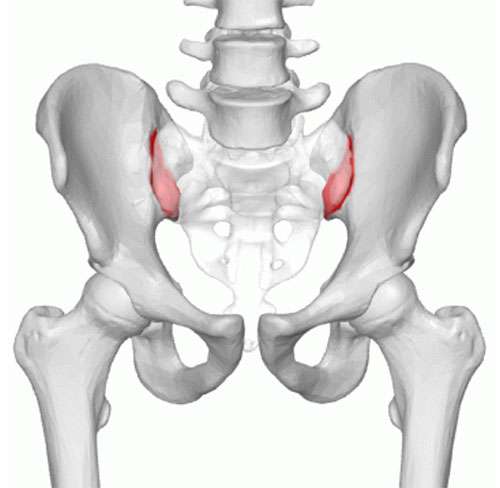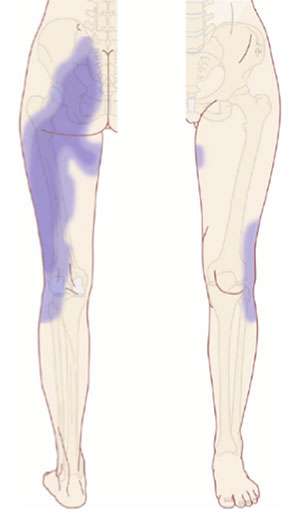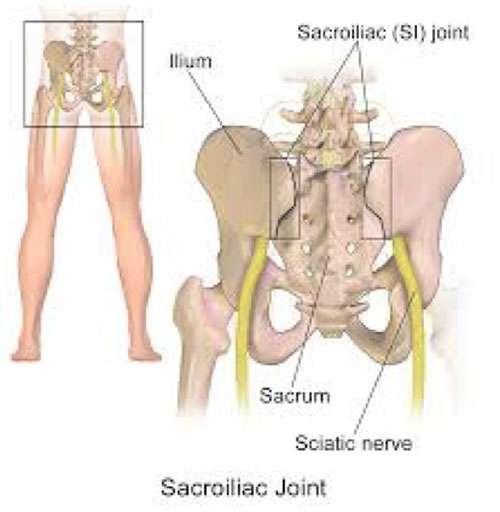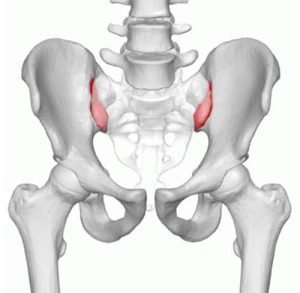PainMed Pain Clinic offers Sacroiliac Joint Injection in Sydney by expert doctors. Find out more about Sacroiliac Joint Pain treatment and pain management. Hip & Sacral Area – Sacroiliac Joint Injection
The sacroiliac joint has been shown to be a source of pain in 10% to 27% of suspected cases with chronic low back pain utilizing controlled comparative local anaesthetic blocks. A sacroiliac joint injection is an outpatient procedure for treating low back and buttock pain.
What are sacroiliac joints?
Sacroiliac joints connect your spine to your hip bone. They connect the bottom of the spine, called the sacrum, to the outer part of the hip bone, called the ilium. You have two sacroiliac joints. One is found on each side of the sacrum.
Sacroiliac joints help control your hip area when you move. They help transfer forces from your lower body to your upper body. Each sacroiliac joint has several ligaments to help strengthen it.

What is sacroiliac joint pain?
You may feel pain if a sacroiliac joint is injured. At times it may feel like simple muscle tension, but at other times the pain can be severe. Sometimes cartilage inside the joint is injured, but at other times only ligaments around the joint are affected.
You usually feel sacroiliac joint pain in an area from your low back down to your buttocks. But sometimes, if a joint is very inflamed, pain may even extend down the back of the leg. The diagram shows where sacroiliac joint pain is usually felt.
How do I know if I have sacroiliac joint pain?
If you have pain in one or more of these areas on the diagram you may have sacroiliac joint pain. Common tests such as x-rays or MRIs may not always show if a sacroiliac joint is causing pain. Your pain doctor can do other tests to find out if you have sacroiliac joint pain.
What is a sacroiliac joint injection?
In a sacroiliac joint injection, a local anaesthetic and corticosteroid are injected into one or both of your sacroiliac joints, or to the ligaments surrounding the joints. The local anaesthetic, a numbing medicine, lessens your pain temporarily. The corticosteroid reduces inflammation that may be causing pain.
The injection can be used for diagnosis and treatment. If the injection immediately lessens your pain and helps you move better, it tells the doctor which joint is causing the pain.

What happens during an injection?
The procedure is performed in the operation theatre. You will be sedated and local anaesthesia will be used to numb your skin. The doctor will then insert a small needle into on or both of your sacroiliac joints, or the ligaments surrounding the joint. Fluoroscopy, a type of x-ray, will be used to ensure the safe and proper position of the needle. Once the doctor is sure the needle is correctly placed, the medicine will be injected.
What happens after an injection?
You will be monitored for up to monitored closely in the recovery room for 30 minutes after the injection. When you are ready to leave, the staff will give you discharge instructions. You will need to keep a pain diary. It is important to maintain a diary to help the doctor ascertain the success of the diagnostic injection. You may feel immediate pain relief and numbness in your back for a limited period of time after the injection which is the local anaesthetic effect and an indication that the right areas were targeted.

How long can I expect pain relief?
How long you can expect pain relief depends on how many areas are injured, and on the amount of inflammation. Sometimes an injection can bring several months of pain relief, and then more treatment is needed. Other times, particularly if there is no underlying bone or joint problem, one injection brings long-term pain relief.
If your pain you have short-term good quality pain relief,you maybe a suitable candidate for radiofrequency ablation (RFA) of the lumbar medial branch nerve. This procedure provides a more sustained disruption of pain signals and often prolonged pain relief.
How do I prepare for the procedure?
Please advise staff if you are:
- Taking blood thinners (especially warfarin and clopidogrel)
- Diabetic
- Pregnant (or any chance of you being pregnant).
- Allergic to iodine, betadine, shellfish, local anaesthetics, or steroids.
- Unwell (especially if you have an infection)
Staff may advise you to:
- Fast
- Take your usual medications (apart from those mentioned above)
- Arrange for someone to accompany you home
Hip & Sacral Area – Sacroiliac Joint Injection
The sacroiliac joint has been shown to be a source of pain in 10% to 27% of suspected cases with chronic low back pain utilizing controlled comparative local anaesthetic blocks. A sacroiliac joint injection is an outpatient procedure for treating low back and buttock pain.
What are sacroiliac joints?
Sacroiliac joints connect your spine to your hip bone. They connect the bottom of the spine, called the sacrum, to the outer part of the hip bone, called the ilium. You have two sacroiliac joints. One is found on each side of the sacrum.
Sacroiliac joints help control your hip area when you move. They help transfer forces from your lower body to your upper body. Each sacroiliac joint has several ligaments to help strengthen it.


What is sacroiliac joint pain?
You may feel pain if a sacroiliac joint is injured. At times it may feel like simple muscle tension, but at other times the pain can be severe. Sometimes cartilage inside the joint is injured, but at other times only ligaments around the joint are affected.
You usually feel sacroiliac joint pain in an area from your low back down to your buttocks. But sometimes, if a joint is very inflamed, pain may even extend down the back of the leg. The diagram shows where sacroiliac joint pain is usually felt.
How do I know if I have sacroiliac joint pain?
If you have pain in one or more of these areas on the diagram you may have sacroiliac joint pain. Common tests such as x-rays or MRIs may not always show if a sacroiliac joint is causing pain. Your pain doctor can do other tests to find out if you have sacroiliac joint pain.
What is a sacroiliac joint injection?
In a sacroiliac joint injection, a local anaesthetic and corticosteroid are injected into one or both of your sacroiliac joints, or to the ligaments surrounding the joints. The local anaesthetic, a numbing medicine, lessens your pain temporarily. The corticosteroid reduces inflammation that may be causing pain.
The injection can be used for diagnosis and treatment. If the injection immediately lessens your pain and helps you move better, it tells the doctor which joint is causing the pain.
What happens during an injection?
The procedure is performed in the operation theatre. You will be sedated and local anaesthesia will be used to numb your skin. The doctor will then insert a small needle into on or both of your sacroiliac joints, or the ligaments surrounding the joint. Fluoroscopy, a type of x-ray, will be used to ensure the safe and proper position of the needle. Once the doctor is sure the needle is correctly placed, the medicine will be injected.
What happens after an injection?
You will be monitored for up to monitored closely in the recovery room for 30 minutes after the injection. When you are ready to leave, the staff will give you discharge instructions. You will need to keep a pain diary. It is important to maintain a diary to help the doctor ascertain the success of the diagnostic injection. You may feel immediate pain relief and numbness in your back for a limited period of time after the injection which is the local anaesthetic effect and an indication that the right areas were targeted.

How long can I expect pain relief?
How long you can expect pain relief depends on how many areas are injured, and on the amount of inflammation. Sometimes an injection can bring several months of pain relief, and then more treatment is needed. Other times, particularly if there is no underlying bone or joint problem, one injection brings long-term pain relief.
If your pain you have short-term good quality pain relief,you maybe a suitable candidate for radiofrequency ablation (RFA) of the lumbar medial branch nerve. This procedure provides a more sustained disruption of pain signals and often prolonged pain relief.
How do I prepare for the procedure?
Please advise staff if you are:
- Taking blood thinners (especially warfarin and clopidogrel)
- Diabetic
- Pregnant (or any chance of you being pregnant).
- Allergic to iodine, betadine, shellfish, local anaesthetics, or steroids.
- Unwell (especially if you have an infection)
Staff may advise you to:
- Fast
- Take your usual medications (apart from those mentioned above)
- Arrange for someone to accompany you home



